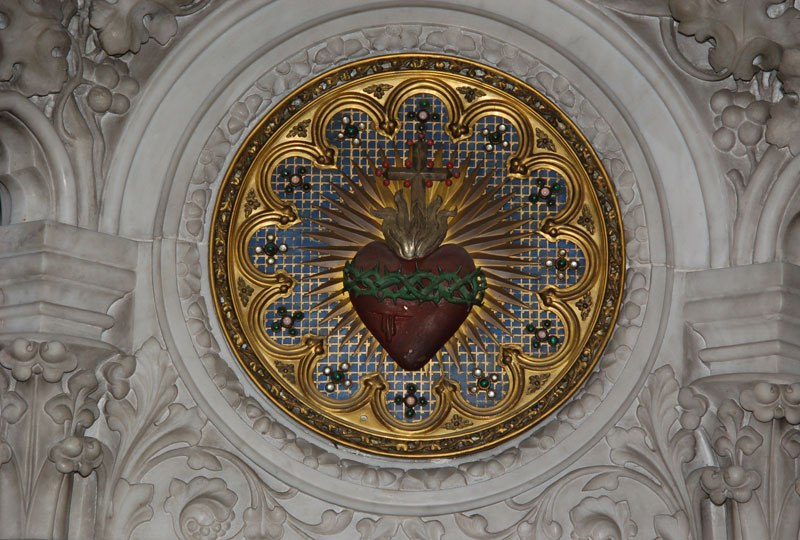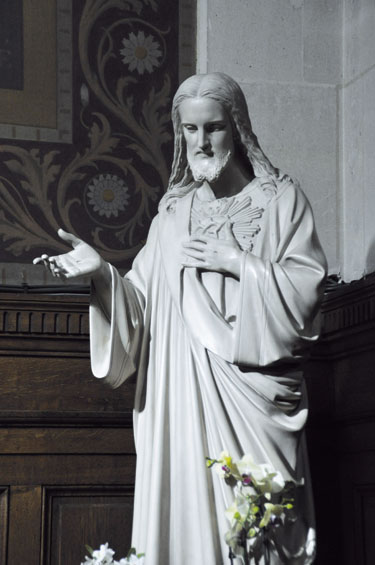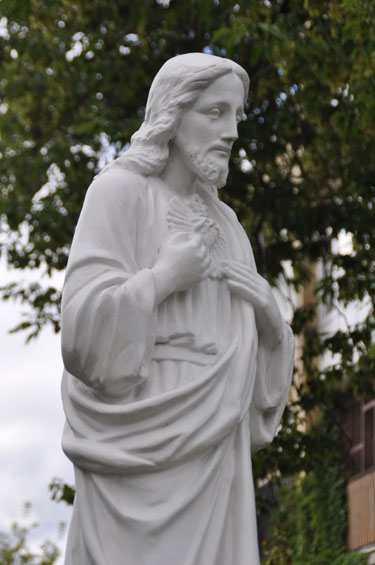While devotion to the Sacred Heart was only foreshadowed in the Old Testament and only hinted at in the New, it developed from the earliest centuries of the Church.

Pope St. Alexander maintained that the Church was born from the Passion of Christ and particularly at the moment when the last drops of redeeming Blood poured upon men from the wound in His Side, opened by a lance. Bishop St. Irenaeus of Lyon, martyred in 208, wrote: “The Church is that source of living water poured out for us from the Heart of Christ.” St. Justin, martyred in 165, spoke similarly: “We Christians are the true Israel that came out of Christ, emerging from His Heart as water from a rock.” Pope St. Gregory the Great exhorted the faithful: “Grasp from God’s words what is in His Heart so that you can have a more ardent attraction to the eternal goods.” Others who celebrated the Sacred Heart were St. Bede the Venerable, St. Anselm of Aosta, Blessed Guerric of Igny, Gilbert of Holland and Richard of St. Victor. A special mention should be made of St. Bernard of Clairvaux, who wrote: “The secret of His Heart was unveiled to us by the wound in His Side, revealing this great sacrament of goodness: the merciful entrails of our God;” and his disciple William of Saint-Thierry, who called the Sacred Heart the “Holy of Holies, Ark of the Covenant, golden treasure chest, urn of our humanity, containing the manna of divinity.”
At that time, Church worship was directed mainly to the wound in the Side of the Redeemer. But “what is here written of the side of Christ, opened by the wound from the soldier, should also be said of the Heart which was certainly reached by the stab of the lance.” It was in the Middle Ages that this took the form of devotion to the Divine Heart: the wound in the Side was conceived as a gateway leading to the mystical recesses of the Sacred Heart, also pierced by the spear.
Until then, this devotion was limited to private worship, practiced by chosen souls, usually monks, but it still was not the object of public worship, for which there was no official authorisation or sufficient popular diffusion. To the glory of the female sex it must be said that a few great medieval mystics were the ones who revived the devotion by spreading it outside the cloisters.


In the twelfth century, its centre was the Benedictine monastery of Helfta, in Saxony (Germany). In it was formed, as it were, a school on the Sacred Heart, sponsored by a spiritual family of pious women religious: St. Lutgard (+1246), St. Matilda of Magdeburg (+1282), the Abbess Gertrude of Hackeborn (1232-1292) and the siblings, St. Matilda of Helfta (+1299) and St. Gertrude the Great (1256-1302). Some of them were favoured by visions of the Sacred Heart and enlightened concerning the devotion they were to spread inside the Church.
In the thirteenth century, this devotion attained theological maturity thanks mainly to the mendicant orders. With their fiery preaching and wise teaching, Franciscans and Dominicans began to spread among the people that radical spirituality which until then had been the privilege of a few souls separated from the world. St. Francis of Assisi, St. Dominic, St. Anthony of Padua, St. Albert the Great, St. Bonaventure, St. Thomas Aquinas and later the Blessed Henry Suso, St. Catherine of Siena, St. Bridget of Sweden and St. Lutgard of Awières became propagators of devotion to the pierced Heart.
“Christ shed His blood from the wound in the side and that of the heart in order to strengthen the faltering faith of his disciples and to excite piety in many others who were deceived by the tranquillity of a pleasant life, thus rekindling cold and weakened souls.”
